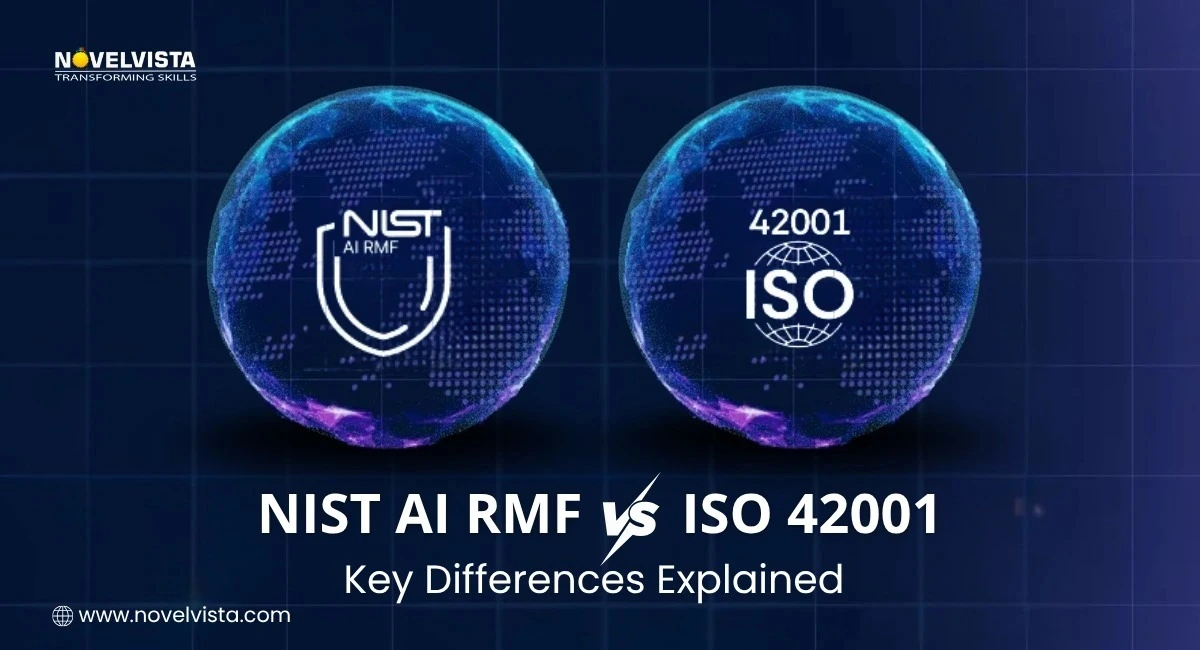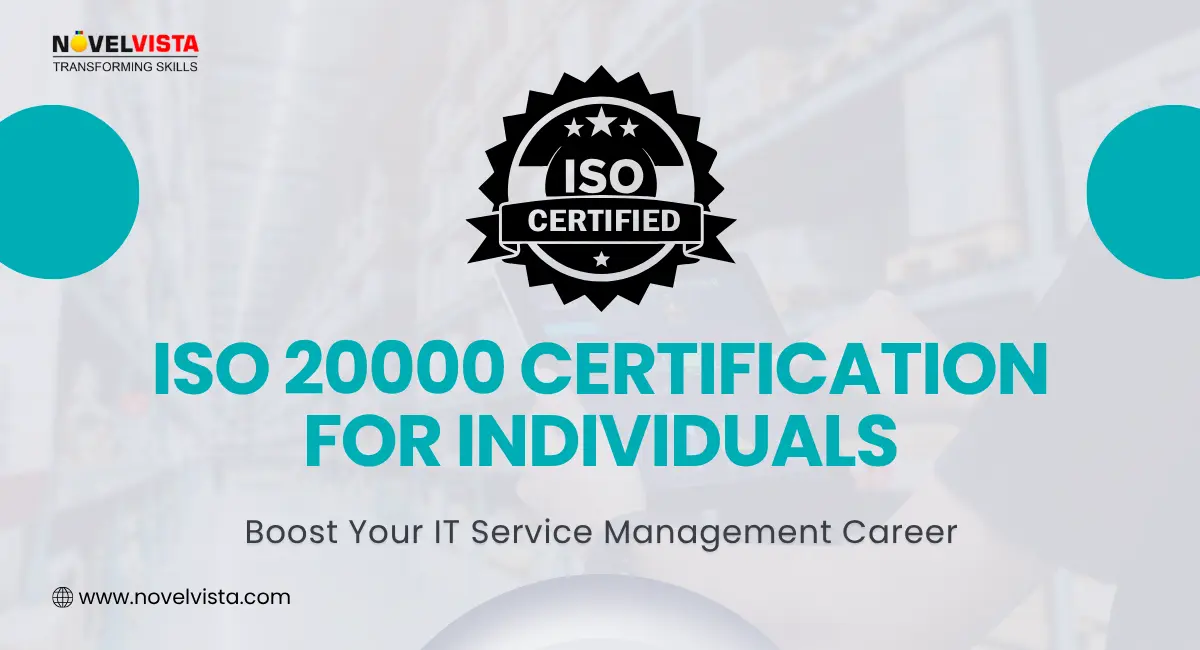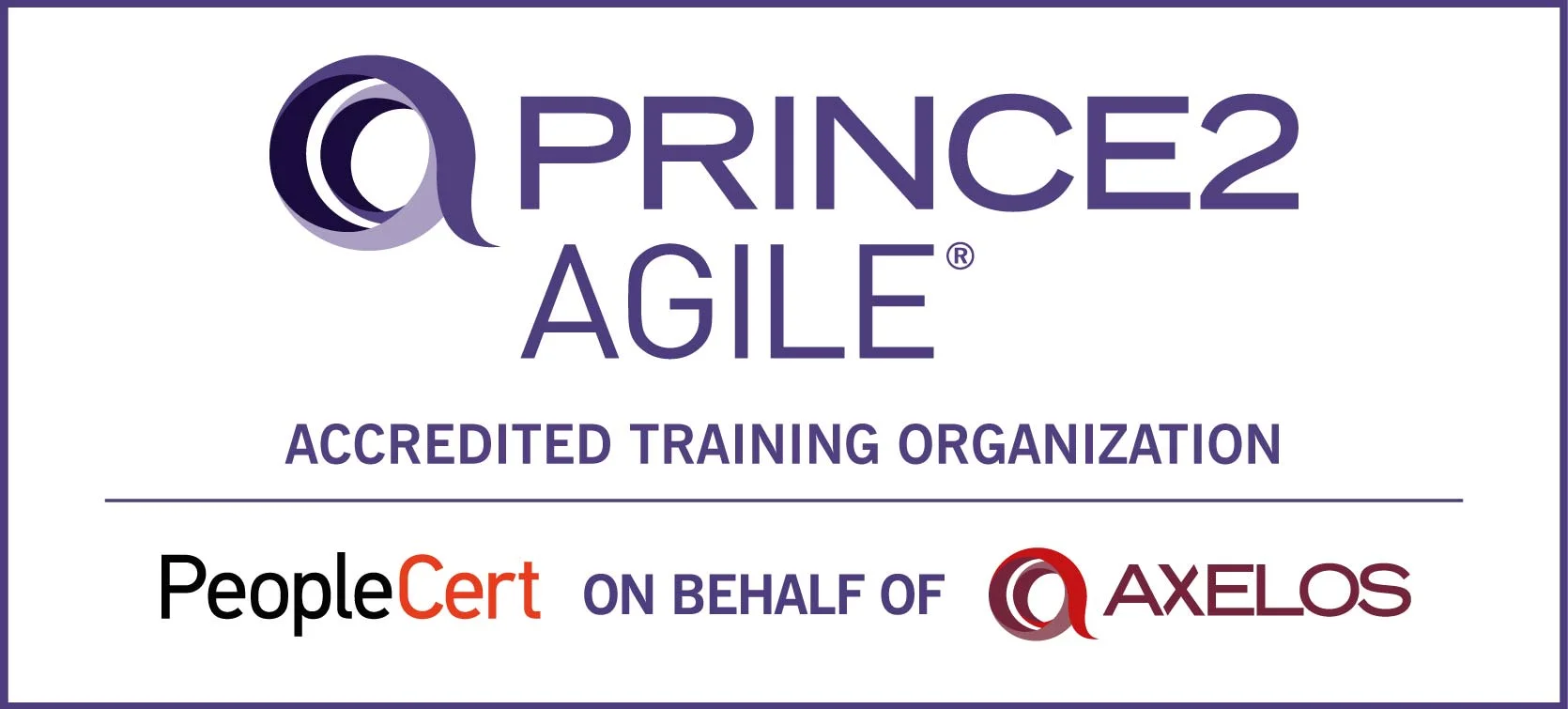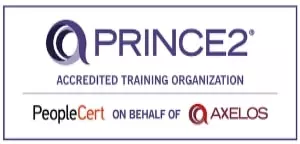Artificial Intelligence is no longer a distant technological dream. Today, AI decisions influence healthcare diagnostics, fraud detection, hiring, supply chain predictions, customer experience, and nearly every aspect of digital operations. With this explosive growth, the world is becoming increasingly concerned about the safety, transparency, fairness, and accountability of AI systems.
According to a 2024 Deloitte report, 73% of organizations adopting AI face challenges in establishing governance, and 68% struggle with risk and regulatory alignment. This is exactly why comparing NIST AI RMF vs ISO 42001 has become so crucial. These two frameworks give organizations a structured way to build, deploy, and monitor responsible and trustworthy AI.
This blog gives you a clean, detailed understanding of NIST AI RMF vs ISO 42001, their differences, similarities, and when to use each—without the unnecessary complexity.
What Is the NIST AI RMF?
The NIST AI Risk Management Framework (AI RMF) is a voluntary, flexible, and widely adopted framework created by the U.S. National Institute of Standards and Technology. It focuses on helping organizations manage the risks of AI and ensure systems are trustworthy, transparent, secure, fair, and accountable.
It is built on four major functions—Map, Measure, Manage, and Govern—that guide teams through identifying risks, assessing them, monitoring them, and building responsible AI systems.
Key Characteristics of NIST AI RMF
- Risk-Focused Framework
The NIST AI RMF prioritizes identifying, evaluating, and handling AI risks across the lifecycle. It encourages teams to focus on bias, transparency, and model robustness.
- Voluntary and Non-Certifiable
There is no audit or certification for NIST AI RMF adoption. This makes it flexible, easy to start with, and ideal for innovation-driven organizations.
- US-Centric but Globally Referenced
It aligns closely with U.S. AI governance goals but is now used worldwide as a baseline for trustworthy AI development.
- Lifecycle-Oriented Guidance
It focuses on practical steps teams can take throughout development, deployment, and monitoring—making it a hands-on guide for engineering teams.
What Is ISO 42001?
ISO 42001 is the world’s first AI Management System (AIMS) standard, launched by the International Organization for Standardization in 2023. Unlike the NIST AI RMF, ISO 42001 is auditable and certifiable, making it ideal for enterprises that require globally recognized proof of AI governance.
ISO 42001 uses the Plan–Do–Check–Act (PDCA) model and defines structured controls, documentation requirements, and governance processes.
Key Characteristics of ISO 42001
- Formal Management System Standard
ISO 42001 lays out prescriptive requirements for policies, roles, documentation, monitoring, and continual improvement.
- Certifiable through Third-Party Audits
Organizations can undergo audits and receive certification—providing strong proof of ethical, safe, and well-governed AI.
- Globally Recognized and Regulation-Ready
The standard supports compliance with international laws, including the EU AI Act, GDPR principles, and upcoming AI-specific legislation in countries like India and Singapore.
- Extensive Lifecycle Governance
ISO 42001 defines end-to-end processes from procurement to decommissioning, making it ideal for enterprise-scale AI operations.
Your Roadmap to High-Value, Low-Risk AI
Unlock a clear, practical path to adopt AI with confidence.
Start building smarter, safer AI systems today.
NIST AI RMF vs ISO 42001: Why This Comparison Matters
As more organizations invest in AI systems, choosing the right governance approach becomes critical. The comparison of NIST AI RMF vs ISO 42001 helps businesses understand:
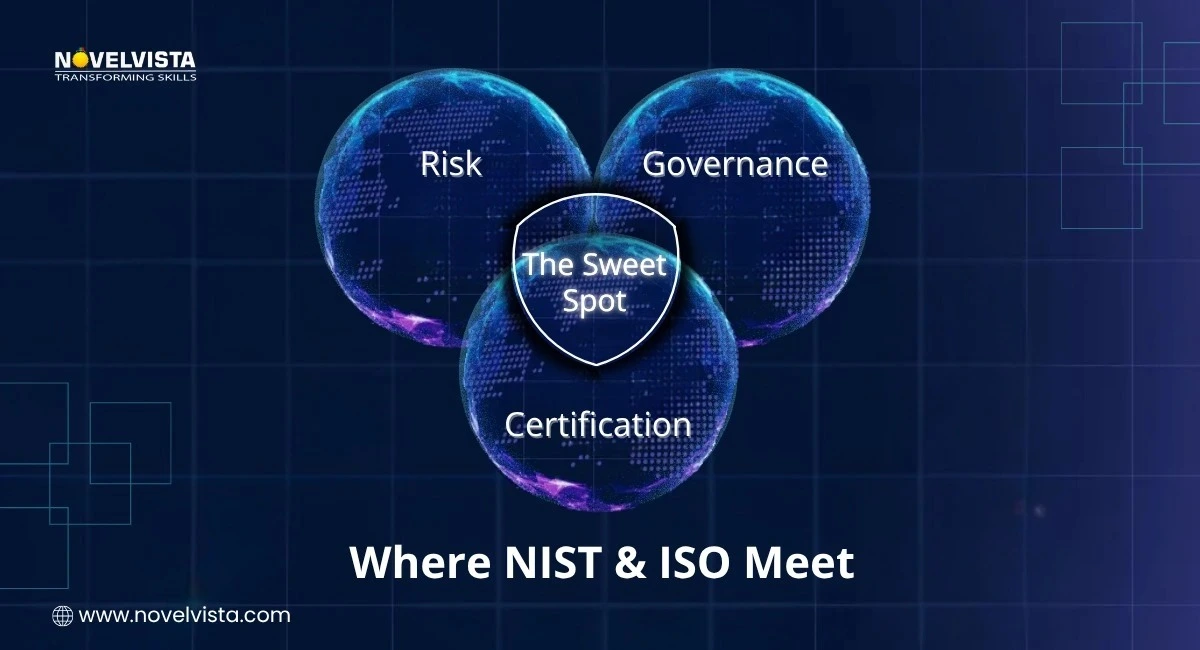
- Which approach fits their maturity level
- Whether they need certification
- How deeply they want to operationalize AI governance
- Whether they need risk guidance or a full management system
- Which standard aligns better with global regulations
With both frameworks gaining rapid global adoption, knowing the right fit can accelerate AI governance maturity and reduce future compliance risks.
NIST AI RMF vs ISO 42001: Key Differences Explained
Below are the major differences with 2–3 lines of subtext for clarity.
1. Purpose and Intent
- NIST AI RMF: Voluntary Risk Management Framework
It provides flexible guidance on identifying and handling AI risks. Ideal for organizations experimenting with AI or establishing trustworthiness practices without rigid formal requirements.
- ISO 42001: Formal Governance Standard
It defines structured policies, controls, and documentation for AI operations. Best suited for enterprises needing structured governance and certification to demonstrate accountability.
2. Certification vs. Non-Certification
- NIST AI RMF: Not Certifiable
There is no formal audit process. Organizations use it for internal alignment, improving AI reliability, and building trustworthy models without external validation.
- ISO 42001: Fully Certifiable
Organizations can undergo official audits and earn certification. This increases trust with clients, investors, and regulators—offering a major competitive advantage.
3. Structure and Operational Approach
- NIST’s Map–Measure–Manage–Govern Structure
This approach helps teams understand the context of AI risks, evaluate them, and put mechanisms in place to mitigate them. It’s practical and lifecycle-driven.
- ISO 42001’s PDCA (Plan–Do–Check–Act)
This structure ensures continuous improvement in AI governance. It establishes a loop of planning controls, implementing them, monitoring performance, and updating policies.
4. Regulatory Alignment
- NIST AI RMF: Strong in the United States
Widely used in U.S. government and tech-sector organizations. It aligns well with federal AI governance initiatives and American regulatory expectations.
- ISO 42001: Internationally Recognized Standard
Designed for global applicability and compliance, including alignment with the EU AI Act. Suitable for multinational organizations and regulated industries.
5. Documentation Requirements
- NIST AI RMF: Low to Medium Documentation Needs
Documentation is recommended but not mandatory. Teams have flexibility based on maturity and the complexity of their AI systems.
- ISO 42001: Heavy Documentation & Audit Trails
Requires detailed policies, procedures, evidence logs, and governance records. Essential for companies seeking certification or operating in highly regulated sectors.
6. AI Lifecycle Coverage
- NIST AI RMF: Comprehensive but Flexible Lifecycle Guidance
Covers risk mapping, model development, testing, deployment, monitoring, and transparency practices. Works well for engineering-led teams.
- ISO 42001: Full Governance Coverage Across the AI Lifecycle
Goes deeper into procurement, vendor selection, data governance, system validation, impact assessments, and decommissioning. Ideal for enterprise-scale governance.
7. Implementation Complexity
- NIST AI RMF: Quick and Beginner-Friendly
Easy to adopt because it doesn’t enforce specific processes. Suitable for SMEs, startups, and teams beginning their AI governance journey.
- ISO 42001: More Complex & Resource-Intensive
Requires cross-functional collaboration, leadership involvement, internal audits, and formal process creation. Best suited for mature organizations.
8. Use Cases and Business Fit
- NIST AI RMF: Best for Innovation-Driven Environments
Research labs, academic institutions, and AI-first startups often choose NIST for its flexibility and risk-focused guidance.
- ISO 42001: Best for Regulated Industries and Global Enterprises
Financial institutions, healthcare providers, large IT companies, and government contractors rely on ISO 42001 for governance and compliance assurance.
Curious about the career and earning potential in this field? Our ISO 42001 Salary Guide for 2025 breaks down real-world salaries, job roles, global averages, and growth opportunities: Read the Salary Report.
NIST AI RMF vs ISO 42001
Feature |
NIST AI RMF |
ISO 42001 |
Nature |
Framework |
Standard |
Certification |
No |
Yes |
Focus |
AI risks & trustworthiness |
Full AI governance system |
Structure |
Map–Measure–Manage–Govern |
PDCA continuous improvement |
Recognition |
Strong in U.S. |
Global |
Regulatory Fit |
Moderate |
High |
Documentation |
Low–Medium |
High |
Lifecycle Coverage |
Moderate |
Extensive |
Ideal For |
Flexible environments |
Regulated enterprises |
Which One Should You Use?
Choosing between NIST AI RMF vs ISO 42001 depends on your organization’s size, regulatory environment, and AI maturity.

You should choose NIST AI RMF if:
- You want a flexible framework to start with
- You don’t need certification
- You want to focus on risk assessments and trustworthiness
- You are an early-stage or innovation-focused organization
You should choose ISO 42001 if:
- You want a certifiable AI governance standard
- You operate in regulated sectors
- You need globally recognized compliance
- You require structured processes and documentation
Most mature organizations use both:
Start with NIST AI RMF for risk identification and analysis → then adopt ISO 42001 for operational, audit-ready governance.
Conclusion: NIST AI RMF vs ISO 42001
As AI becomes central to digital business, responsible and trustworthy AI is no longer optional—it is a competitive necessity. The comparison of NIST AI RMF vs ISO 42001 reveals that each serves a different purpose:
- NIST AI RMF helps organizations understand, assess, and manage AI risks.
- ISO 42001 builds a structured, certifiable governance model for enterprise AI operations.
Choosing the right one—or combining both—can dramatically improve your organization’s ability to deploy safe, ethical, and compliant AI systems.
Ready to Become a Certified ISO 42001 Lead Auditor?
If you're looking to build deep expertise in AI governance and stand out as a trusted professional, this is the perfect next step.
Join NovelVista’s ISO/IEC 42001:2023 Lead Auditor Certification Training and learn how to:
- Conduct end-to-end audits for AI Management Systems (AIMS)
- Apply globally accepted governance and risk controls for responsible AI
- Help organizations achieve compliance with emerging regulations like the EU AI Act
- Strengthen your profile with a globally recognized Lead Auditor credential
Frequently Asked Questions
Author Details

Mr.Vikas Sharma
Principal Consultant
I am an Accredited ITIL, ITIL 4, ITIL 4 DITS, ITIL® 4 Strategic Leader, Certified SAFe Practice Consultant , SIAM Professional, PRINCE2 AGILE, Six Sigma Black Belt Trainer with more than 20 years of Industry experience. Working as SIAM consultant managing end-to-end accountability for the performance and delivery of IT services to the users and coordinating delivery, integration, and interoperability across multiple services and suppliers. Trained more than 10000+ participants under various ITSM, Agile & Project Management frameworks like ITIL, SAFe, SIAM, VeriSM, and PRINCE2, Scrum, DevOps, Cloud, etc.
Confused About Certification?
Get Free Consultation Call

